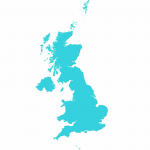British Fibre Networks Target 1Gbps Fibre for 35% of New UK Homes
An interesting new alternative network has launched today called British Fibre Networks, which aims to build a new open access and 1Gbps capable pure fibre optic broadband service (FTTP/H) for over 35% of new build homes by 2021. The ISP is headed by the former CEO of the controversial i3 Group.
At this point readers might recall that the i3 Group, alongside its subsidiary H20 Networks, was initially one of the first operators in the United Kingdom to pioneer modern urban fibre optic networks. The operator did manage to build some networks around cities, such as Bournemouth and Dundee, albeit with mixed success (contractor disputes, shoddy street works etc.).
Unfortunately all that came to an end sometime ago after the Serious Fraud Office (SFO) revealed criminal activity, which last year resulted in four men being found guilty of a £160 million financing fraud and sentenced to a total of 44 years in jail (here). Happily the founder and CEO of i3 Group, Elfed Thomas, was found not guilty and exonerated from all charges.
Advertisement
Since then Elfed has been busy putting together his new business venture, which he hopes will capture a slice of the United Kingdom’s growing market for ultrafast Fibre-to-the-Home (FTTH/P) networks. Lately a huge amount of investment has been going towards such deployments, fostered both by enhanced regulatory support via Ofcom’s changes and financial support from the Government etc.
Elfed Thomas told ISPreview.co.uk:
“Clearly there are a number of well financed ISP entrants into the market. We ensure new homes have the fibre infrastructure which can connect with this growing choice of fibre networks. Choice and capacity to the customer is vital for a competitive platform. For too long, new homeowners and builders have been subject to a monopolistic offer, which is overpriced and never installed in time for when the customer moves in.
British Fibre Networks aims to address this and create a model that breaks up the monopoly of BT. Working with developers, we will deliver superior connectivity and choice to new homeowners, many of whom have previously been quoted extortionate prices for access to a patchwork copper/fibre network. It will add value for house builders, who can now offer a home with pure fibre connectivity and choice.”
As Elfed hints above, there are already quite a few “full fibre” operators, other than Openreach (BT), that work with new build developments (e.g. IFNL / GTC / BUUK, Hyperoptic, Virgin Media etc.) and some, like Independent Fibre Networks Limited, also offer this as an open access solution via several ISPs.
No doubt Vodafone and Cityfibre (they purchased i3/H2O’s legacy network assets after it went under) may also look to target this part of the market when their joint deployment gets underway. Suffice to say that Elfed’s BFN will face plenty of competition, although the operator is confident that their combination of “speed, capacity and choice will make it a compelling alternative for house builders and homeowners alike.”
On top of that British Fibre Networks is currently said to be in discussions with a “leading price comparison site“, which they say will provide a unique platform to manage and offer the choice of ISP to customers. However before that they’ll actually need to build some networks and sadly the press release doesn’t offer any information on package details or initial roll-out locations. The issue of funding is another big unknown.
Advertisement
At this stage it’s too early to judge whether BFN’s aspiration toward connecting pure fibre to over 35% of new homes by 2021 is even remotely viable, although that part of the market is much smaller and easier to deploy into than existing properties, where the cost of building can be significantly higher. It’s always easier to put fibre into the ground if you can do it before the houses and tarmac go on top.
Side Note: The press release claims that the UK average broadband speed is 16.51Mbps, which is well below even Ofcom’s estimate of 36.2Mbps from last year (here). After a bit of checking we believe that this figure was extracted from M-Labs data (here), which is a study that was based on speedtests rather than actual network availability (in the UK this will be impacted by the wide use of slow ADSL lines and WiFi etc.).
Mark is a professional technology writer, IT consultant and computer engineer from Dorset (England), he also founded ISPreview in 1999 and enjoys analysing the latest telecoms and broadband developments. Find me on X (Twitter), Mastodon, Facebook, BlueSky, Threads.net and Linkedin.
« Suffolk Chamber of Commerce Calls for 100Mbps Broadband Everywhere

















































Comments are closed